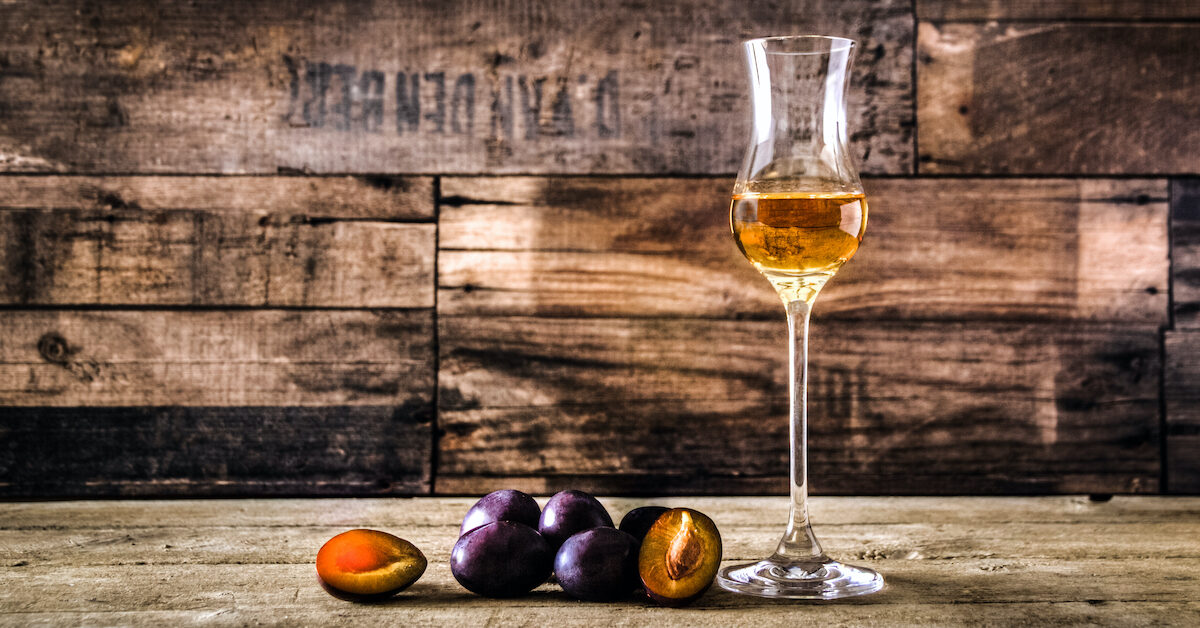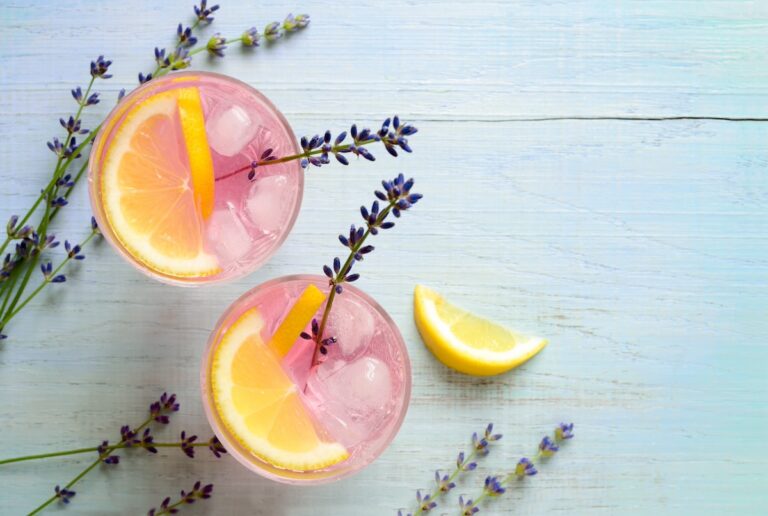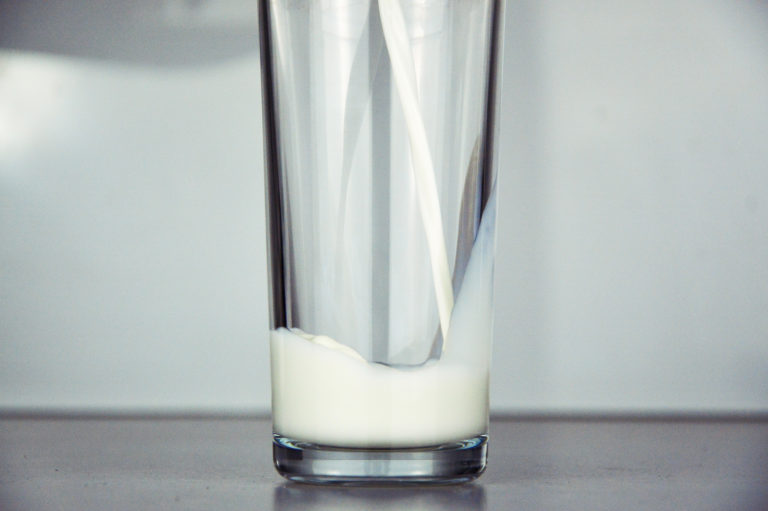A year ago this April, I was served two different types of eau de vie de framboise after two different dinners. One was at Les Arlots in Paris, and the other was at Soces, in Paris. The first one was cold and fruit-forward, with a very bright raspberry taste. The second was raspberry, but also had an earthy undertone, not dissimilar to manure. Oddly, I loved the second one more. And, with both, I enjoyed the complexity and the way the fermented alcohol settled my stomach after a heavy meal. This February, I tried an eau de vie de mirabelles at Daniel et Denise in Lyon. It was so strong on the alcohol, there was almost no taste of plum. I brought home a bottle of eau de vie de framboise, hoping it might be like the earthy one I had at Soces, but have found that it’s a bit more generically raspberry-flavored than that, less complex. (I have to find out what I was served at Soces!)

What is Eau de Vie?
Eau de vie, or “water of life,” is a colorless brandy made by quickly fermenting and double distilling fruit. Harkening back hundreds of years in France, Switzerland, and Germany, eau de vie is usually made in the Alps and throughout Alsace. The general practice is to let eaux de vie rest for short periods of time in steel or glass after fermenting in copper pots and distilling, so that they retain as much of the fruit flavor and aroma when bottled. Common flavors are framboise (raspberry), poire (pear), pêche (peach), pomme (apple), cerise (cherry), gratte-cul (rosehip), quetsch (a type of dark-skinned plum), and mirabelles (which are native to France and similar to greengage plums). Eaux de vies are usually served at room temperature, after a dinner that has included wines, as a digestif. (Though some argue they must be cold.) They have a high alcohol content, and are served in small portions of one or two ounces.
Eau de vie is similar in some ways to Cognac, which is made from white wine grapes and aged in oak barrels, or Armagnac, a somewhat rustic cousin of Cognac. But eau de vie is colorless and has fewer copper and butterscotch tones–it tends to be brighter, crisper, and very fruity. Eau de vie is one of the oldest varieties of spirits, which makes sense when you think about it: Around the world, people have always had access to fruit, and, inevitably, have found naturally fermented fruit on the ground and decided to turn it into booze. The most well-known French eaux de vie today are Poire Williams, made from the Williams pear, and Calvados from Normandy. (Though Calvados is barrel aged for two years and is not clear, it is still considered an eau de vie, as is distilled from apple cider.)
The whole point of a digestif is that it will help you begin to digest your dinner and settle your stomach after a rich meal. In fact, the pungent alcohol can actually start to break down proteins, fats and carbs, rather quickly. And it lowers your blood sugar, making the food coma feeling dissipate much more quickly than if you just went from dinner to the TV. A key aspect to the digestif is that the inherent bitterness of it causes your body to freak out a bit. Apparently your body thinks it’s poison. And all of a sudden, our digestion starts working harder to expel it, thereby breaking down that six course European meal all the more quickly.
I have found that for me, digestifs really do work; it’s sort of amazing. (The cynic will just tell you that you feel better because you’re more tipsy.) Say what you want, I love Chartreuse for this reason right around Christmas, when heavy meals with lots of wine are de rigueur. The secret mix of 160-ish herbs always gives me a second wind, when normally I might be tempted to curl up on the couch in the fetal position. No time for that during the holidays!
Digestifs are usually served neat, right after the meal and before coffee, though they can be after coffee, in which case they are called pousse-café. In Italy, those who don’t want, or can’t, drink alcohol will substitute a little gut-friendly balsamic vinegar as a digestif, either consumed straight or as a tonic at the end of a meal. The sour acetic acid, plus the fermented quality of the vinegar, apparently do the same thing as an eau de vie.
I have been experimenting lately with eau de vie as an apéritif. I know, I know, an apéritif is meant to stimulate your palate and the digestif is the opposite. But, what fun is adhering to rules? Why not start the digestion early? Here are a few new fusion-ish ways to drink eau de vie:
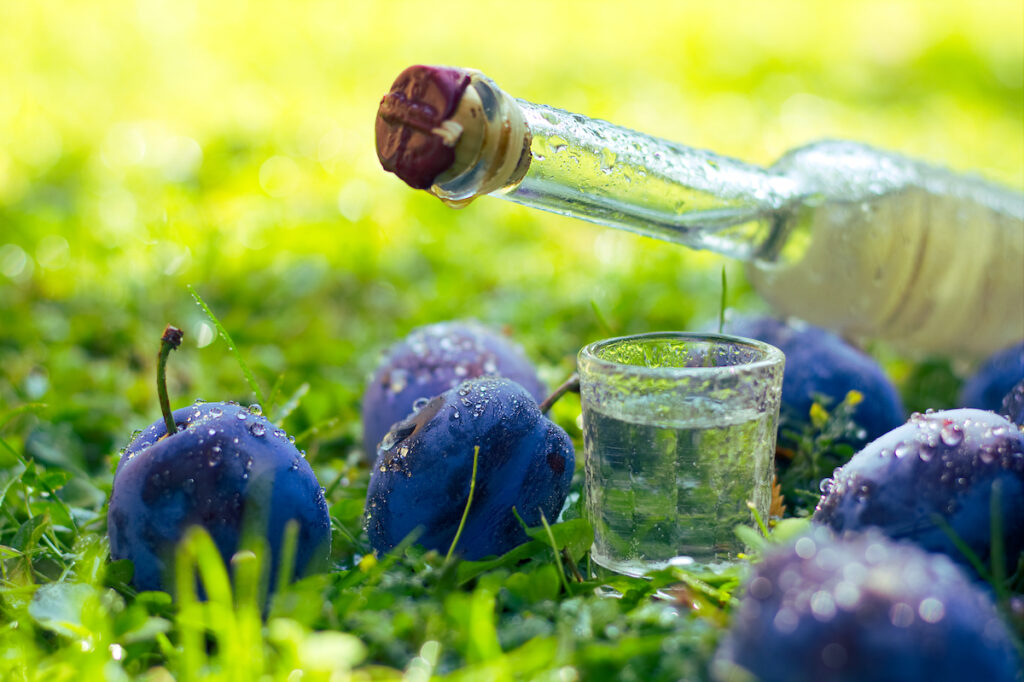
How to Drink Eau de Vie as an Apéritif
Feel free to scoff in the face of tradition and enjoy your eau de vie as an apéritif. Apéritifs are usually dry and bitter, usually with an uplifting citrus element, to stimulate the appetite. In these recipes of mine, we are using a digestif and making it more sour, and then pairing it with salty appetizers.
Eau de vie apéritif #1
Ingredients:
1 ounce eau de vie (any flavor)
Juice of one lemon
Mix your eau de vie with the juice of one entire lemon. Shake with ice, and serve over ice with a twist. Goes deliciously with salty smoked cheeses, crackers, olives, sun dried tomatoes, chips, or nuts. (An alternative is the juice of two limes.)
Eau de vie apéritif #2
Ingredients:
1 ounce eaux de vie
1 ounce grapefruit juice
1 ounce orange juice (or the juice of one entire squeezed clementine)
This goes great with peach eau de vie–it will take on complex notes when mixed with an earthier raspberry, or bright mirabelle. Apple and pear are great, too. Shake with ice, serve over ice, and add a lime or lemon twist. This goes great with creamier cheeses, baguette, nuts, and either dried or fresh fruit, especially figs. Perfect in the afternoon on a holiday, when it feels chilly outside.
Eau de vie apéritif #3
Ingredients:
1 splash of orange bitters
1 ounce eau de vie
1 ounce cold juice
Top with Champagne
Add your bitters to a champagne or wine glass, swirl and discard excess. Add your eau de vie and juice. If you’re using a pear or apple eau de vie, you might choose a matching pear or apple juice, or lime or lemonade to add more zing. Fill glass with a bubbly rosé, Champagne, or crémant, and garnish with a lemon twist or fruit slice. This is a fun drink to have with chips, popcorn, and crudites. Watch out, you won’t even know you’re drinking until it’s too late! A perfect spring drink for a holiday afternoon.
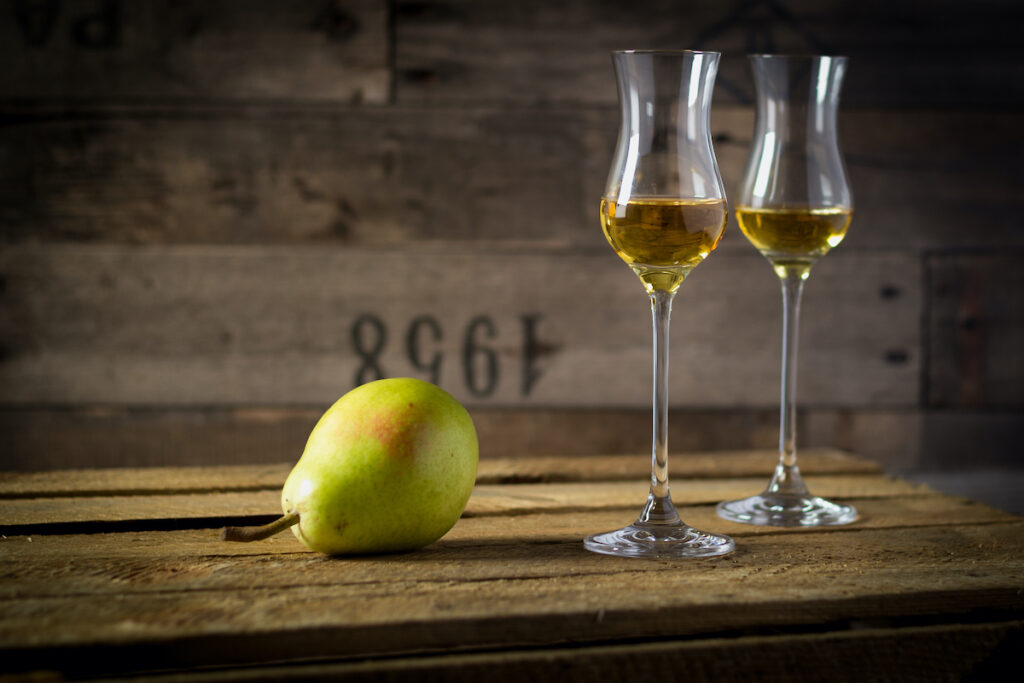
How to Drink Eau de Vie as a Digestif
You can drink eau de vie neat, or on the rocks. Both are great. Some people like to add a dash of soda water or just regular water. I like the ice to melt, instead. If the meal has been very rich and long, I prefer it neat. And not a lot– no more than 1 ounce. This is not a drink you keep on the table and keep refilling your glass with, like wine. A small amount goes a long way. And you’re not meant to stumble away from the table like you’re at a Mardi Gras celebration. (Speaking of which, in Julia Mayle’s new novel Pelican Girls, which I reviewed last week, she writes about the French colonists making eau de vie in the New World from, ostensibly, American fruits and berries they found when they got here.)
If you like flavored coffees, another way to drink a digestif of eau de vie is to make 3 ounces of espresso and add 1 ounce of eau de vie of your choice, and maybe a tiny drop of vanilla to round it out, if you go in for very fragrant drinks. This goes best with framboise, cherry, or pear eau de vie. This is a slightly less work-intensive alternative to the weird fad of drinking coffee and adding a drop of eau de vie to each sip, getting stronger as the coffee wanes (I have never tried this!).
But, ostensibly, in both situations, the bitters in this spiked coffee will help you digest, and the caffeine will do double duty with the alcohol to give you a nice burst of energy for a long long promenade. (Which you might need to get through the dishes, clean up, or endless present wrapping for a holiday.) If you’re a person who likes dessert but wants to watch the calories, this will satisfy that need, with none of the butter and sugar.
Your eau de vie can act as both apéritif and digestif, all in one bottle. It’s a pretty amazingly versatile, simple, and stylishly French way to brighten any meal. Try it!
Caitlin Shetterly isan Editor at Large of Frenchly. She is also the author of 4 books: Fault Lines, Made for You and Me, Modified, and the novel, Pete and Alice in Maine, which was published in 2023 by Harper. She is a native daughter and she lives with her two sons and husband in an old house on the coast of Maine.

